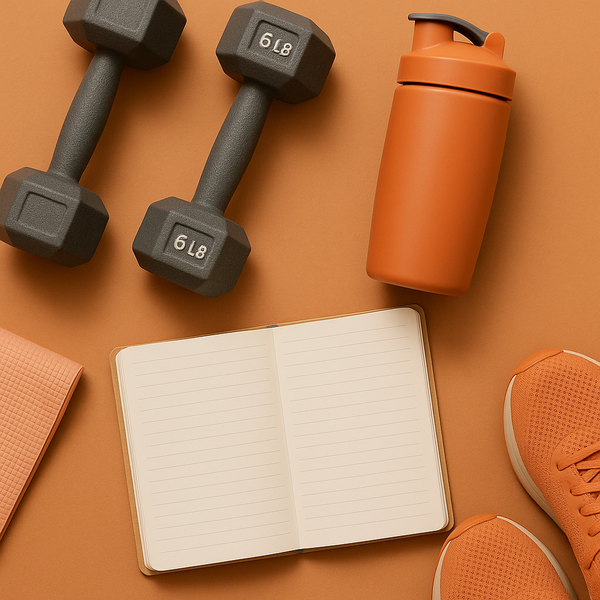
Embarking on a fitness journey can feel overwhelming, especially when you're just starting out. The good news is that you don't need complicated routines or expensive equipment to begin. This guide is designed to simplify the process, offering clear, actionable advice for creating and sticking to a beginner workout plan that fits your lifestyle and helps you build a sustainable fitness habit.
Why Start a Beginner Workout Plan?
Starting with a structured plan is crucial for several reasons. Firstly, it removes the guesswork. Knowing exactly what you need to do each day makes it easier to stay consistent. Secondly, beginner plans are typically designed to gradually build strength, endurance, and flexibility, reducing the risk of injury that can come from doing too much too soon. They also help you establish a routine, making exercise a regular part of your week rather than an occasional event. Consistency is far more important than intensity when you're starting out. A plan helps you track progress, stay motivated, and build confidence as you hit small milestones.
Choosing the Right Activities for Beginners
When you're new to working out, focus on activities that are accessible, enjoyable, and relatively low-impact. Walking is one of the simplest yet most effective ways to start. It requires no special equipment (beyond comfortable shoes) and can be done almost anywhere. Aim for 30 minutes most days of the week, gradually increasing your pace or distance. Bodyweight exercises are also excellent for building foundational strength. Movements like squats, lunges, push-ups (even against a wall or on your knees), and planks can be modified to suit your current fitness level. These exercises work multiple muscle groups simultaneously and can be done at home without weights. Light cardio activities such as cycling (stationary or outdoor) or using an elliptical machine are great for improving cardiovascular health. The key is to start slowly and focus on proper form to avoid strain or injury. Don't feel pressured to do high-intensity workouts immediately; build a base first.
Structuring Your Weekly Workout Schedule
A balanced beginner workout plan should include a mix of cardio, strength training, and flexibility. A good starting point is to aim for 3-4 workout days per week, allowing for rest days in between to allow your body to recover and rebuild. For example, you could do cardio on Monday and Thursday, strength training on Tuesday and Friday, and use Wednesday, Saturday, and Sunday as rest days or active recovery days (light stretching, gentle walking). On your strength training days, you can either do full-body workouts or split them into upper body and lower body days. Full-body workouts are often recommended for beginners as they are efficient and ensure all major muscle groups are worked regularly. Keep sessions relatively short initially, perhaps 20-30 minutes including warm-up and cool-down. As you get fitter, you can gradually increase the duration or intensity. Remember, consistency is key, so choose a schedule that you can realistically stick to week after week.
Essential Elements of Every Workout: Warm-up and Cool-down
Never skip your warm-up or cool-down! A warm-up prepares your muscles and cardiovascular system for exercise, reducing the risk of injury. It should involve 5-10 minutes of light activity, such as gentle jogging in place, arm circles, leg swings, or dynamic stretches that mimic the movements you'll be doing in your workout. This increases blood flow to your muscles and improves joint mobility. The cool-down is just as important. After your main workout, spend 5-10 minutes doing static stretching, holding each stretch for 20-30 seconds without bouncing. Focus on stretching the major muscle groups you worked. This helps improve flexibility, reduces muscle soreness, and brings your heart rate back down gradually. Incorporating mobility exercises into your routine can also be beneficial for overall joint health and movement quality, complementing the traditional warm-up and cool-down.
Tips for Staying Motivated and On Track
Starting is often easier than sticking with it. To maintain motivation, set small, achievable goals. Instead of aiming to lose a certain amount of weight immediately, focus on completing three workouts this week or walking for 30 minutes without stopping. Celebrate these small victories. Find a workout buddy or join a local fitness group for support and accountability. Track your progress, whether in a journal, a fitness app, or just by noting improvements in how you feel or what you can do. Listen to your body and don't be afraid to take extra rest days when needed. Exercise shouldn't be a punishment; find activities you enjoy. If you dislike running, try dancing or swimming. Experiment until you find what resonates with you. Remember why you started – whether for health, energy, or stress reduction – and revisit that reason when motivation wanes. Building a habit takes time, so be patient and persistent with yourself.
Progressing Beyond the Beginner Stage
As you get fitter, your beginner plan will start to feel easier. This is a sign you're ready to progress. Progression can involve increasing the duration or intensity of your cardio, adding more sets or repetitions to your strength exercises, using resistance bands or light weights, or trying more challenging variations of exercises. You might also explore new types of workouts, such as beginner yoga, Pilates, or group fitness classes designed for novices. Listen to your body and introduce changes gradually. Don't jump from a beginner plan to an advanced one overnight. Continue to prioritize proper form and recovery. Consistently challenging yourself, while respecting your body's limits, is the key to continued improvement and long-term fitness success. Consider consulting resources on intermediate workout plans when you feel ready.
Starting a workout plan is a positive step towards a healthier lifestyle. By choosing simple activities, structuring your week, incorporating warm-ups and cool-downs, and finding ways to stay motivated, you can build a consistent fitness routine that yields lasting results. Be patient with yourself, celebrate your progress, and enjoy the journey of becoming stronger and healthier one workout at a time.

